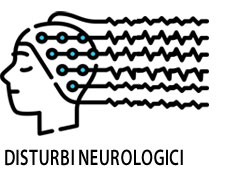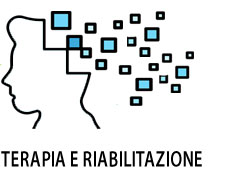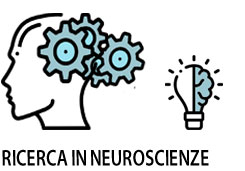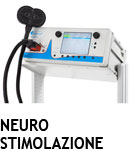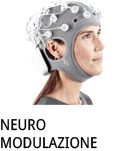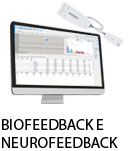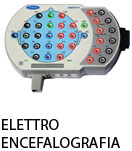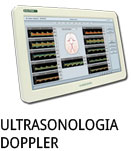- +39 011 5821948
- info@geasoluzioni.it
- Lun - Ven 8:00 - 17:00
The effects of repetitive transcranial magnetic stimulation in older adults with mild cognitive impairment: a protocol for a randomized, controlled three-arm trial
- Abstract:
- Background: Mild Cognitive Impairment (MCI) carries a high risk of progression to Alzheimer’s disease (AD) dementia. Previous clinical trials testing whether cholinesterase inhibitors can slow the rate of progression from MCI to AD dementia have yielded disappointing results. However, recent studies of the effects of repetitive transcranial magnetic stimulation (rTMS) in AD have demonstrated improvements in cognitive function. Because few rTMS trials have been conducted in MCI, we designed a trial to test the short-term efficacy of rTMS in MCI. Yet, in both MCI and AD, we know little about what site of stimulation would be ideal for improving cognitive function. Therefore, two cortical sites will be investigated in this trial: (1) the dorsolateral prefrontal cortex (DLPFC), which has been well studied for treatment of major depressive disorder; and (2) the lateral parietal cortex (LPC), a novel site with connectivity to AD-relevant limbic regions. Methods/design: In this single-site trial, we plan to enroll 99 participants with single or multi-domain amnestic MCI. We will randomize participants to one of three groups: (1) Active DLPFC rTMS; (2) Active LPC rTMS; and (3) Sham rTMS (evenly split between DLPFC and LPC locations). After completing 20 bilateral rTMS treatment sessions, participants will be followed for 6 months to test short-term efficacy and track durability of effects. The primary efficacy measure is the California Verbal Learning Test-II (CVLT-II), assessed 1 week after intervention. Secondary analyses will examine effects of rTMS on other cognitive measures, symptoms of depression, and brain function with respect to the site of stimulation. Finally, selected biomarkers will be analyzed to explore predictors of response and mechanisms of action. Discussion: The primary aim of this trial is to test the short-term efficacy of rTMS in MCI. Additionally, the project will provide information on the durability of cognitive effects and potentially distinct effects of stimulating DLPFC versus LPC regions. Future efforts would be directed toward better understanding therapeutic mechanisms and optimizing rTMS for treatment of MCI. Ultimately, if rTMS can be utilized to slow the rate of progression to AD dementia, this will be a significant advancement in the field.
- Patologie/Applicazioni:
- Anno:
- 2019
- Tipo di pubblicazione:
- Articolo
- Parola chiave:
- stimolazione magnetica transcranica; Riabilitazione cognitiva; Alzheimer; Double Blind
- Testata scientifica:
- BMC Neurology
- Nota:
- I 99 partecipanti sono stati assegnati casualmente ad uno dei tre gruppi: (1) stimolazione rTMS attiva su DLPFC (dorsolateral prefrontal cortex); (2) stimolazione rTMS attiva su LPC (lateral parietal cortex); e (3) e stimolazione rTMS Sham (suddiviso uniformemente tra le posizioni DLPFC e LPC). Lo studio consiste di 20 sessioni durante la settimana per un periodo da 2 a 4 settimane, suddivise in sedute mattutine e pomeridiane per ciascun paziente. Vengono utilizzati gli stessi parametri per erogare gli stimoli attivi per l'area DLPFC e LPC: una frequenza di impulsi di 10 Hz erogati bilateralmente con una durata del treno di 4 secondi (40 impulsi) e ITI (intervallo intertreno) di 11 secondi. Durante ogni sessione, vengono applicati 2000 impulsi su ciascun emisfero al 120% della soglia motoria a riposo del partecipante, che viene misurata individualmente per ciascun emisfero. Gli impulsi vengono somministrati da uno stimolatore magnetico MagPro X100. Il sistema di coil a raffreddamento liquido Cool-B65-A / P, posizionato correttamente nello spazio da un sistema di neuronavigazione Localite (Localite GmbH, Bonn, Germania) che utilizza i dati MRI dei pazienti, crea "clic" uditivi per impulsi falsi che corrispondono ai suoni di clic di rTMS attivi. Inoltre, per ogni sessione, sia Sham che attiva, ogni partecipante indossa elettrodi adesi al cuoio capelluto attraverso i quali viene trasmessa una bassa corrente elettrica (2-6 mA a non più di 100 V) al fine di fornire una stimolazione cutanea che imita la sensazione della rTMS effettiva. Vi sono prove che gli individui con demenza lieve mostrino una migliore risposta cognitiva alla rTMS rispetto a quelli con demenza più grave. Il modello di risposta differenziale all'rTMS in relazione alla gravità della demenza è plausibilmente dovuto al declino della neuroplasticità intrinseca, alla maggiore distanza cranio-corteccia o ad altri fattori.
- DOI:
- 10.1186/s12883-019-1552-7
Hits: 1710
La nostra storia
GEA soluzioni si affaccia nel 2013 al mercato della strumentazione medicale di alto livello tecnologico ma la sua storia parte da più lontano, clicca qui per approfondire.
GEA SOLUZIONI SRL
via Spalato 72/A, Torino
Tel.: 011 5821948 / 011 4463853
Fax: 011 0433281
Email: info @ geasoluzioni.it
P. IVA IT11696920013
REA TO1233648

